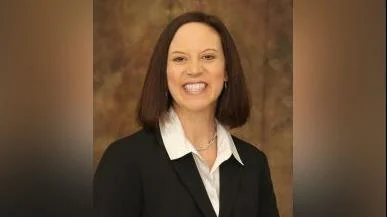Illinois homeowners should not have to lose their houses because legislators can’t do what they were elected to do, the La Salle County Republicans argued in a Facebook post recently.
The group focused on a statewide trend of property taxes growing faster than household, including a new Illinois Policy Institute report on the topic.
Throughout Illinois, property taxes collected by local governments doubled between 2000 and 2015, despite household incomes growing by just 31 percent, according to the Institute report from analyst Josh Klingner and intern Evelyn Hussey.
In La Salle County, the disparity has been even more pronounced. Property taxes per household were $1,534 in 2000 and household income sat at $40,338, according to the institute’s analysis of data from the Illinois Department of Revenue and the U.S. Census Bureau’s “American Community Survey.” By 2015, average property taxes had grown by 50 percent to hit $2,302, while household income increased to $50,633, an increase of only 26 percent.
The GOP group said things cannot continue this way.
“Something has to give, and it shouldn't be our right to live in our homes,” the group posted. “[P]ensions are killing Illinois!”
The average property tax burden, or the percentage of a household’s income that goes to property taxes, was 3.8 percent in 2000. Fifteen years later it had hit 4.5 percent, an increase of more than 18 percent.
Property tax burdens have also spiked in Cook County and the collar counties, with Cook County residents experiencing a 73 percent growth – to 7.5 percent -- in their tax burden between 2000 and 2015. Lake County residents have seen their tax burden increase to 9.4 percent.
In the state as a whole, median household income was $46,304 in 2000 and the average tax bill was $2,013, for a tax burden of 4.3 percent. By 2015, the tax burden had hit 6.7 percent, with the average tax bill nearly doubling to $3,884 and the median income growing to $57,574.
The trend is not region-wide, according to a report from WalletHub cited in the institute’s analysis. In Wisconsin, the average effective property tax rate, or the tax bill as a percentage of the property’s value, is 1.96 percent. Iowa’s is 1.48 percent, Missouri’s is 1 percent, and Indiana’s and Kentucky’s are 0.87 percent and 0.85 percent, respectively.
As the institute’s analysis points out, Illinois’ effective property tax rate of 2.3 percent – the second highest in the country – is an average, and on the upper end Illinois homeowners pay 5 percent of the value of their home each year in property taxes.
Klingner and Hussey point to several drivers of Illinois’ high property taxes, particularly the amount of local government in the state. Illinois has more units of local government than any other state, requiring taxes to fund their operations and salaries. Illinois is also home to the seventh-highest costs for workers’ compensation, which Illinois’ many units of local government must pay, and high levels of state-subsidized spending.
The institute calls for local government reforms to bring these factors into check and property tax bills under control.
.jpg)



 Alerts Sign-up
Alerts Sign-up